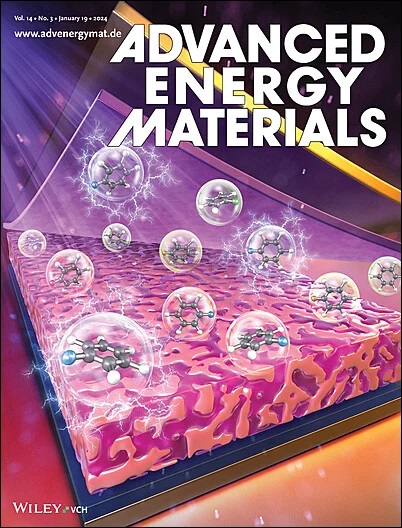IF 24.4
1区 材料科学
Q1 CHEMISTRY, PHYSICAL
引用次数: 0
摘要
三电纳米发电机(TENGs)作为未来可穿戴电子设备的能量收集器和传感器,已显示出巨大的潜力。然而,三电纳米发电机仍需要在理论和优化方面做出重大改进,尤其是在滑动模式设计方面。针对这一差距,本文介绍了一种基于滑动模式 TENG 的距离相关电场(DDEF)理论的新型理论模型。该模型用于模拟滑动模式 TENG 的电气输出和阻抗行为,并对结果进行了实验验证。结果表明,与现有理论模型相比,这一新模型在表示实验性 TENG 方面具有更高的准确性。接下来,分析了影响滑动模式 TENG 的所有主要参数(材料、结构和运动参数),发现了新的优化策略,并且与之前的模型相比,参数分析更加全面。更重要的是,该理论方法同样适用于滑动模式腾博会登录和接触分离模式腾博会登录。这样就无需为每种 TENG 类型定制电容器模型,从而为 TENG 提供了一个通用的理论平台。新模型有助于对不同的 TENG 工作模式进行交叉比较,发现一系列以前未报道过的输出趋势。因此,这项工作极大地拓展了人们对 TENG 的理解,为未来更高效的器件设计铺平了道路。本文章由计算机程序翻译,如有差异,请以英文原文为准。

The Distance-Dependent Electric Field Theory for Sliding Mode Triboelectric Nanogenerators
Triboelectric nanogenerators (TENGs) have demonstrated outstanding potential as energy harvesters and sensors for future wearable electronics. However, TENGs still require major improvements in their theory and optimization, especially for the sliding-mode designs. Addressing this gap, a novel theoretical model based on the distance-dependent electric field (DDEF) theory for sliding mode TENGs is presented here. The model is used to simulate the electrical outputs and impedance behaviour of a sliding mode TENG, and the results are verified experimentally. The outcomes indicate that compared to existing theoretical models, this new model provides higher accuracy in representing experimental TENG. Next, all the primary parameters (material, structural and motion parameters) which affect the sliding mode TENG are analyzed, uncovering new optimization strategies and more comprehensive parametric analysis compared to previous models. More importantly, the theoretical approach is equally applicable to sliding mode TENG as well as contact-separation mode TENG. This eliminates the need for bespoke capacitor models for each TENG type, leading to a universal theoretical platform for TENGs. The new model facilitates cross-comparison between different TENG working modes, uncovering a range of previously unreported output trends. Hence, this work significantly expands the understanding of TENGs, paving way to more efficient future device designs.
求助全文
通过发布文献求助,成功后即可免费获取论文全文。
去求助
来源期刊

Advanced Energy Materials
CHEMISTRY, PHYSICAL-ENERGY & FUELS
CiteScore
41.90
自引率
4.00%
发文量
889
审稿时长
1.4 months
期刊介绍:
Established in 2011, Advanced Energy Materials is an international, interdisciplinary, English-language journal that focuses on materials used in energy harvesting, conversion, and storage. It is regarded as a top-quality journal alongside Advanced Materials, Advanced Functional Materials, and Small.
With a 2022 Impact Factor of 27.8, Advanced Energy Materials is considered a prime source for the best energy-related research. The journal covers a wide range of topics in energy-related research, including organic and inorganic photovoltaics, batteries and supercapacitors, fuel cells, hydrogen generation and storage, thermoelectrics, water splitting and photocatalysis, solar fuels and thermosolar power, magnetocalorics, and piezoelectronics.
The readership of Advanced Energy Materials includes materials scientists, chemists, physicists, and engineers in both academia and industry. The journal is indexed in various databases and collections, such as Advanced Technologies & Aerospace Database, FIZ Karlsruhe, INSPEC (IET), Science Citation Index Expanded, Technology Collection, and Web of Science, among others.
 求助内容:
求助内容: 应助结果提醒方式:
应助结果提醒方式:


